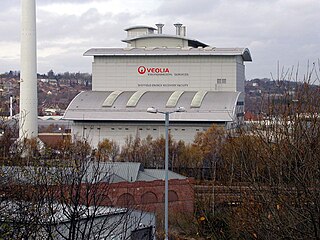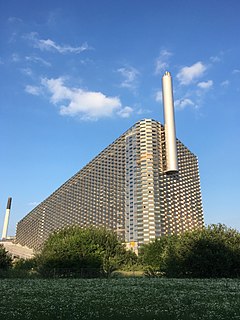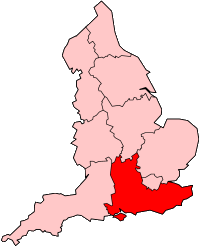
Incineration is a waste treatment process that involves the combustion of substances contained in waste materials. Industrial plants for waste incineration are commonly referred to as waste-to-energy facilities. Incineration and other high-temperature waste treatment systems are described as "thermal treatment". Incineration of waste materials converts the waste into ash, flue gas and heat. The ash is mostly formed by the inorganic constituents of the waste and may take the form of solid lumps or particulates carried by the flue gas. The flue gases must be cleaned of gaseous and particulate pollutants before they are dispersed into the atmosphere. In some cases, the heat that is generated by incineration can be used to generate electric power.

Waste-to-energy (WtE) or energy-from-waste (EfW) is the process of generating energy in the form of electricity and/or heat from the primary treatment of waste, or the processing of waste into a fuel source. WtE is a form of energy recovery. Most WtE processes generate electricity and/or heat directly through combustion, or produce a combustible fuel commodity, such as methane, methanol, ethanol or synthetic fuels.

The Allington Quarry Waste Management Facility is an integrated waste management centre in Allington, Kent. It is the site of the Allington Energy from Waste (EfW) Incinerator. The incinerator is owned by FCC Environment as Kent Enviropower. The facility, which has involved an investment of over £150 Million, is able to process 500,000 tonnes per annum of waste and has the ability to produce 40MW of power. The facility takes non-hazardous waste from households and businesses in Kent and the surrounding area for recycling and energy recovery. Materials separated by householders are sorted and sent for recycling, with the remainder being used to generate electricity to power the facility and for the local supply network.

The Kirklees EfW is a major moving grate incineration plant in Huddersfield, Kirklees, England. The incinerator is owned and operated by Suez Recycling and Recovery UK who signed a 25-year contract with Kirklees Council in 1998 with an option to increase the time period to 2028. The plant is integral to the waste strategy and Unitary Development plan of Kirklees Council, treating 150,000 tonnes of locally generated municipal waste, which when incinerated, will produce enough electricity to power 15,000 homes. Only 136,000 tonnes of waste is actually incinerated, the other tonnages permitted are recovered materials such as metals and Incinerator bottom ash (IBA) and Fly ash.
The Bolton WtE is a waste power station constructed in 1971 in Bolton, and is a major landmark of its skyline. The incinerator burns up to 20 tonnes of household waste per hour or 85,000 t per year, and can generate up to 11 MW of electricity. The plant is operated by Suez Recycling and Recovery UK. The Bolton incinerator is the only household waste incinerator in Greater Manchester.

The Sheffield Energy Recovery Facility, also known as the Energy from Waste Plant, is a modern incinerator which treats Sheffield's household waste. It is notable as it not only provides electricity from the combustion of waste but also supplies heat to a local district heating scheme, making it one of the most advanced, energy efficient incineration plants in the UK. In 2004, the district heating network prevented 15,108 tonnes of CO2 from being released from buildings across the city, compared to energy derived from fossil fuels. The incinerator is a 'static asset' owned by Sheffield City Council and operated by Veolia Environmental Services under a 35 year integrated waste management contract (IWMC)/PFI contract.

South East London Combined Heat and Power, better known as SELCHP, is a major energy from waste incineration plant in South Bermondsey, London. It was designed to generate both heat and electricity. The plant can generate up to 35 MegaWatts of power using a steam turbine in electricity only mode. It can incinerate up to 420,000 tonnes per year of municipal solid waste.

The Newlincs EfW facility is an incinerator which is located in Grimsby, North East Lincolnshire, England. The plant is operated by Cyclerval UK & TIRU Group under a PFI contract. The engineering of the facility is unusual as it consists of an oscillating kiln handling 56,000 tonnes of waste per year/7 tonnes per hour of waste. The facility is capable of generating 3.2 MW electricity.

EcoPark is a waste-to-energy plant which burns waste from several London boroughs to provide electricity for the National Grid. It is located on the River Lee Navigation and bordered by the North Circular Road, in Edmonton in the London Borough of Enfield. It is also known as Edmonton EcoPark.

Teesside Energy from Waste plant is a municipal waste incinerator and waste-to-energy power station, which provides 29.2 megawatts (MW) of electricity for the National Grid by burning 390,000 tonnes of household and commercial waste a year. It is located on the River Tees at Haverton Hill, east of Billingham in North East England. Developed and built by NEM, a subsidiary of Northumbrian Water, the initial plant replaced the Portrack Incinerator and opened in 1998. Subsequently, the facility became part of SITA, now Suez.

Rampion is an offshore wind farm developed by E.ON, now operated by RWE, off the Sussex coast in the UK. The wind farm has a capacity of 400 MW. The wind farm was commissioned in April 2018 and was the first offshore wind farm for the whole south coast of England.

It is estimated that 290 million tonnes of waste was produced in the United Kingdom in 2008 but volumes are declining. In 2012 municipal solid waste generation was almost 30 million tonnes, according to Waste Atlas Platform.

The Keep is a purpose-built archive and historical resource centre which stores, conserves and gives the public access to the records of its three managing partners: The East Sussex Record Office, The University of Sussex Special Collections, and the Royal Pavilion and Museums Local History Collections. The Keep also houses the library and office of The Sussex Family History Group, functions as headquarters of Friends of The Keep Archives, and holds the Historic Environment Record database for East Sussex. From November 2018, it has also functioned as the South East Hub for the Unlocking Our Sound Heritage project for The British Library. It was funded by East Sussex County Council, the City Council of neighbouring Brighton and Hove and the University of Sussex, and was built on land close to the university in the Moulsecoomb area of Brighton and Hove. The building, constructed with a budget of £19 million, opened on 31 October 2013, superseding the former East Sussex Record Office in the county town of Lewes.

Amager Bakke, also known as Amager Slope or Copenhill, is a combined heat and power waste-to-energy plant and recreational facility in Amager, Copenhagen Denmark, located prominently within view of the city's downtown.

Marchwood ERF is a waste incineration plant in Marchwood, near Southampton, England. It is situated beside the estuary of the River Test where it meets Southampton Water, opposite the Port of Southampton. It burns municipal waste and produces electricity for the National Grid.

The Lakeside EfW is located in Colnbrook, Slough, and is the largest facility of its kind in England. It incinerates residual waste, and since 2010 it has also been authorised to incinerate low-level radioactive waste.

Allerton waste recovery park is a waste recovery and incineration site located on a former quarry at Allerton Mauleverer, near Knaresborough, England. It is operated by AmeyCespa on behalf of North Yorkshire County Council and City of York Council, the site is capable of handling 320,000 tonnes of household waste per year.

The Delaware Valley Resource Recovery Facility is a trash incineration plant located in Chester, Pennsylvania. The waste-to-energy plant, which incinerates waste to generate power, was built and operated by Westinghouse from 1991 to 1997. It is currently operated by Covanta. a Morristown, New Jersey-based publicly-traded industrial waste company, and has been criticized for the level of pollution it produces. The plant has the largest capacity of any waste-to-energy plant in the United States.

Gloucestershire Energy from Waste Facility, also known as the Javelin Park Incinerator is a residual waste incinerator and energy-from-waste power station which produces 14.5MW of energy for the National Grid by burning up to 190,000 tonnes of residual waste each year. The site is located adjacent to the M5 motorway, near junction 12 and to the south of Gloucester.





















